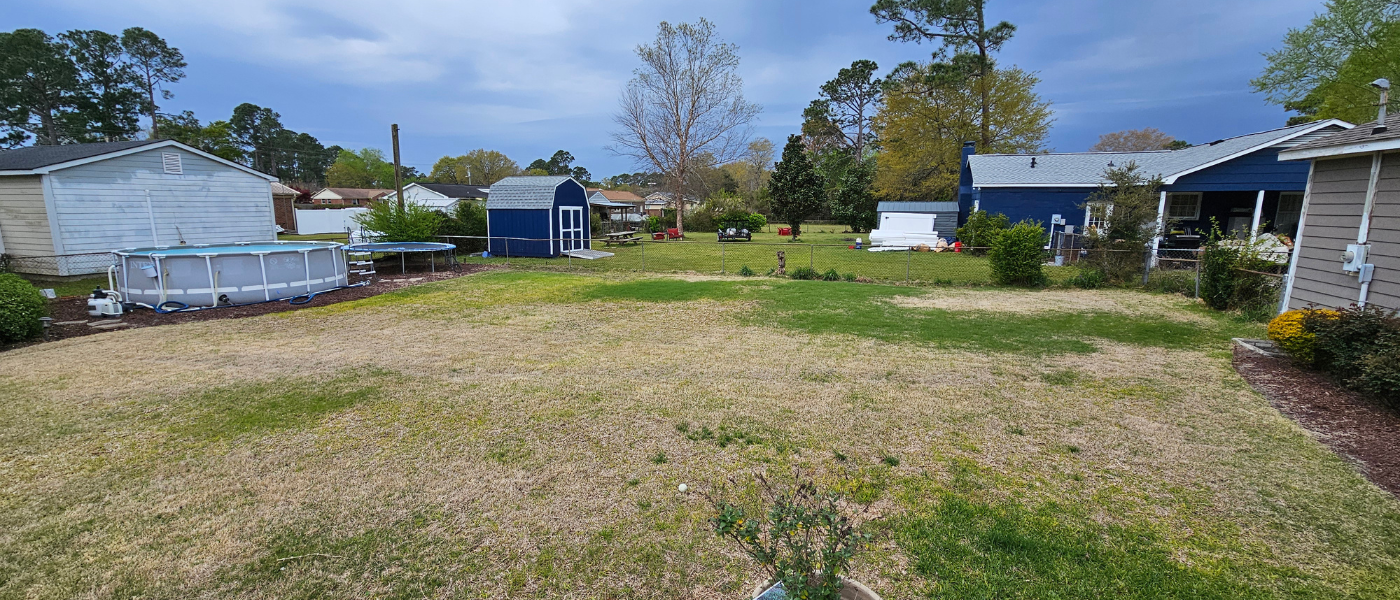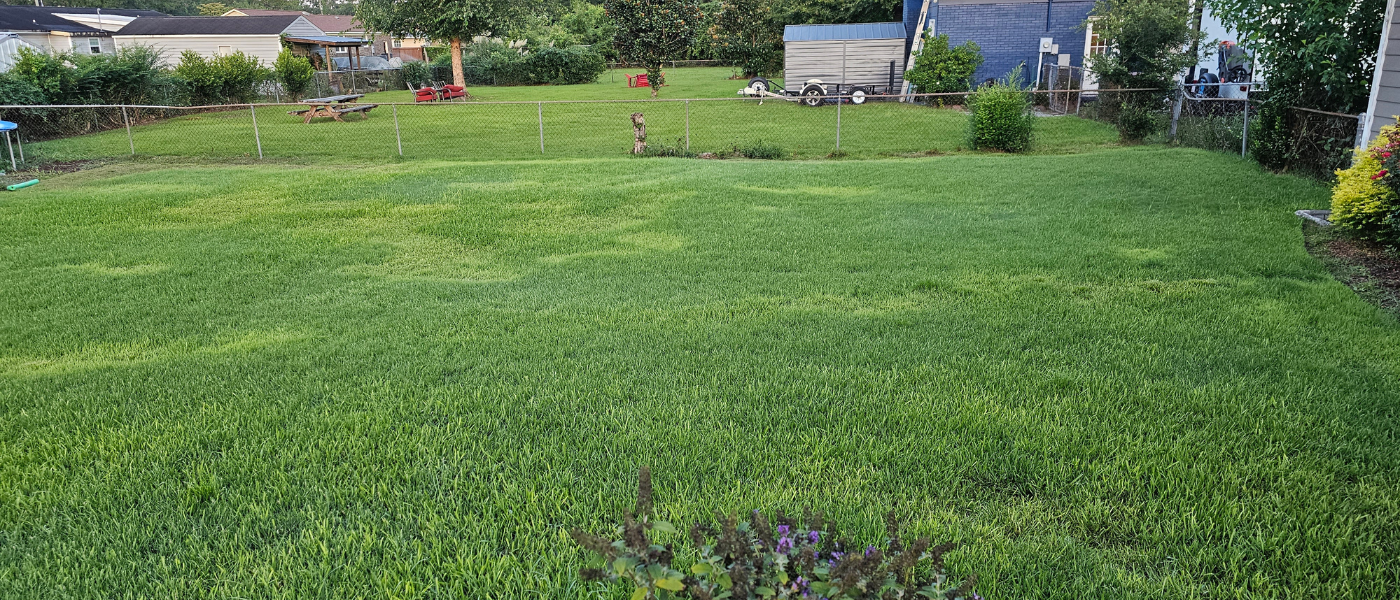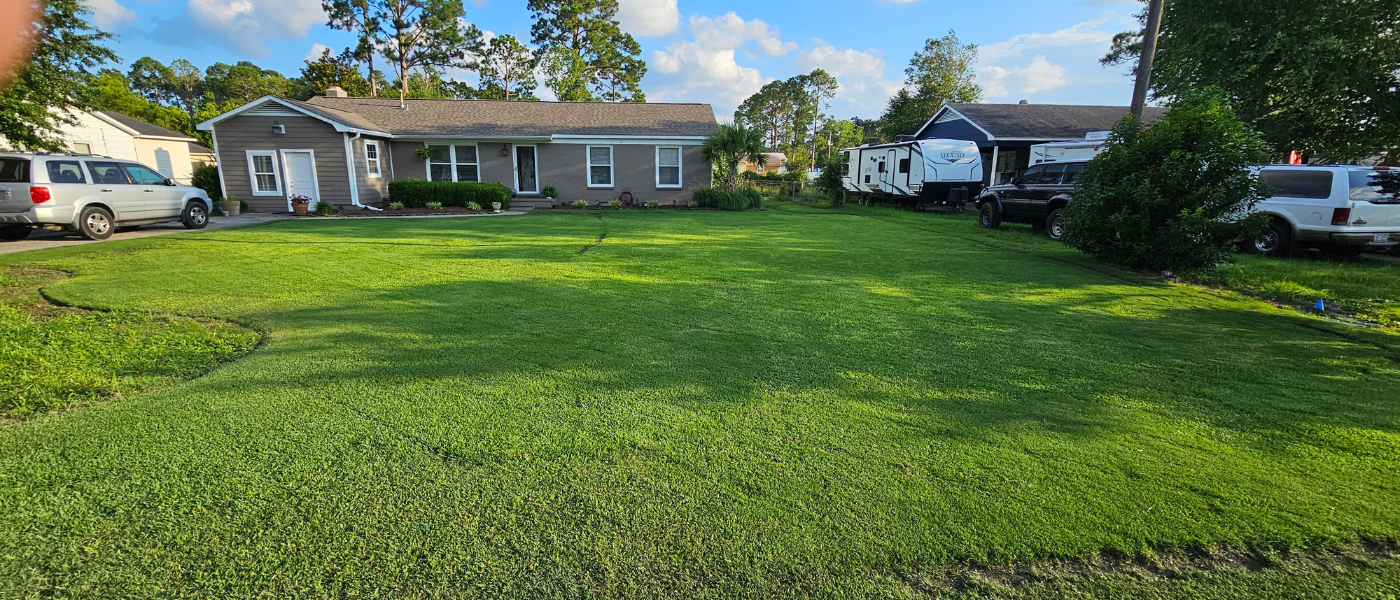Spring Green-Up in Warm-Season Grasses: Your Ultimate Care Guide
Spring green-up in warm-season grasses is essential for lawn health, requiring attention to soil temperature, disease, pests, and proper care like monitoring temperatures, adjusting fertilization, and wise watering to ensure a vibrant lawn.
Hello, lawn care enthusiasts and puzzled homeowners alike! As the chill of winter gives way to the warmth of spring, it’s not uncommon for many of us to start wondering, “What’s wrong with my lawn?” If you’re noticing areas of brown that stubbornly refuse to green up, you’re not alone.
For many, this transition period for warm-season grasses is a mix of anticipation and anxiety. But there’s no need to fret! We’re here to walk you through the spring green-up, providing expert advice and actionable tips to help your lawn recover from winter slumber. Together, we’ll ensure that your turf becomes the envy of the neighborhood. Let’s embark on this journey to lawn perfection this spring!
Section | Key Points |
Understanding Green-Up | Describes the process and variability among grass types like Bermuda, Zoysia, St. Augustine, and centipede. |
Why Lawns Look Rough | Explains reasons like soil temperature, diseases, pests, and weather effects on lawn appearance. |
Tips for Successful Green-Up | Monitor soil temperatures. Delay heavy fertilizing until full green-up. Increase watering as temps rise. Wait to mow until the lawn has greened up. Consider aeration and dethatching for healthier growth. |

Why Your Lawn Might Look Rough Durning Spring Green-Up
Witnessing your lawn transition from its winter rest to the vibrant spring life is a process filled with anticipation and, sometimes, a bit of concern. If you find your lawn looking less than its best as the warmer months roll in, it’s essential to understand that this is often part of the natural cycle. Here’s a closer look at the common reasons why your lawn might not immediately showcase its lush green beauty during spring green-up:
Factors Influencing Lawn Appearance:
Soil Temperature’s Role:
- Key Point: Warm-season grasses require soil temperatures to reach at least 70°F consistently to awaken fully from dormancy.
- Impact: Soil that remains cooler than this threshold can result in unready grass and uneven color and growth.
Diseases and Pests:
- Large Patch Disease: Often affects St. Augustine, Zoysia, and Centipede grasses, manifesting as circular patches of discolored or dead grass.
- Mole Crickets: These pests can damage roots and create uneven surfaces in your lawn, becoming more visible as the grass grows.
- Timing: The damage from these issues might not be noticeable until the grass exits dormancy, revealing the hidden toll taken on your lawn’s health.
Previous Weather Conditions:
- Early Green-Up and Late Freezes: An unusually warm early spring can encourage grass to grow prematurely, only for a sudden freeze to cause damage or delay further growth.
- Effect: This can leave your lawn looking patchy, discolored, or generally underwhelming as it struggles to recover.
Addressing These Challenges:
Monitoring Soil Temperature:
- Regularly check local soil temperature readings to better anticipate your lawn’s response to changing seasons.
Disease and Pest Management:
- Early Detection: Look for early signs of disease and pest activity and address them before they cause significant damage.
- Professional Help: Consult a lawn care professional for effective treatment options.
Adapting to Weather Patterns:
- Flexibility: Be ready to adjust your lawn care practices in response to late-season frosts or unseasonably warm spells to protect your lawn.
Understanding the reasons behind your lawn’s rough appearance during spring green-up can equip you to take proactive steps toward nurturing it back to health. By addressing the underlying causes, whether they’re related to temperature, pests, or past weather events, you can help your lawn overcome its sluggish start and prepare it for a season of lush growth and vibrant color. Remember, patience and targeted care can make all the difference as your lawn transitions into spring.
Do you need lawn treatments and lawn health services?

Understanding the Green-Up Process
Spring green-up marks a pivotal moment for your lawn as it transitions from the quiet of winter to the vibrant growth of spring. This period is when warm-season grasses begin their annual awakening, each with its timing and needs. Let’s delve deeper into what this means for your lawn and how you can ensure it thrives:
Key Grass Types and Their Green-Up Timelines:
Bermuda Grass:
- Characteristics: Known for its resilience and ability to tolerate heat.
- Green-Up Timing: Often the first to green up, signaling the start of the spring growth season.
Zoysia Grass:
- Characteristics: Appreciated for its fine texture and shade tolerance.
- Green-Up Timing: It begins to green up shortly after Bermuda but takes longer to reach full vibrancy.
St. Augustine Grass:
- Characteristics: Valued for its lush appearance and shade tolerance.
- Green-Up Timing: Trails behind Bermuda and Zoysia, require a bit more warmth to fully awaken.
Centipede Grass:
- Characteristics: Known for its low maintenance and minimal fertilizer needs.
- Green-Up Timing: Similar to St. Augustine in its need for warmer temperatures to kickstart growth.
Why Understanding Green-Up Timelines Matters:
- Tailored Care: Knowing when your type of grass typically begins its growth spurt allows you to tailor your lawn care efforts, such as watering, fertilizing, and mowing, to its specific needs.
- Preventing Stress: Avoiding premature fertilization or mowing before your grass has fully greened up helps prevent stress that could impact its health and growth throughout the season.
- Optimizing Health: By aligning your lawn care routine with your grass’s natural growth cycle, you can ensure it enters the peak growing season in the best possible condition.
Understanding the green-up process is crucial for maintaining a healthy, vibrant lawn. Each grass type’s unique requirements during this transition period can significantly impact your lawn’s overall health and appearance throughout the year. Paying close attention to these natural cycles and adjusting your care routine accordingly can set the stage for a lush, green landscape ready to enjoy all season long.
Don’t go at it alone. Ask about our lawn care services.

Tips for a Successful Spring Green-Up
As the spring season unfolds, your lawn requires careful attention to transition smoothly from dormancy to active growth. While patience is crucial during this period, you can take several proactive steps to ensure your lawn survives and thrives. Here are practical tips to guide you through a successful spring green-up:
Essential Practices for Lawn Care:
Monitoring Soil Temperatures:
- Why It’s Important: Understanding the soil temperature helps predict when your grass will start its growth cycle.
- How to Do It: Utilize online tools such as GreenCast to monitor local soil temperature trends.
- Goal: Aim for consistent soil temperatures of 70°F or above as the ideal condition for growth initiation.
Fertilization:
- Timing is Key: Delay significant fertilizing efforts until your lawn fully exits dormancy.
- Risks of Early Fertilization: Applying fertilizer too early can encourage growth vulnerable to unexpected late frosts, potentially setting back your lawn’s progress.
- Recommended Approach: Once you’re confident the grass is actively growing, opt for a light application of a balanced fertilizer, usually indicated by consistent soil temperatures and visible growth.
Watering Wisely:
- Adjusting Water Needs: As the season warms, your lawn will require more water. However, how you water is just as important as how much you water.
- Deep Watering: Water less frequently but more deeply to encourage deep root development, which helps your lawn better withstand periods of drought.
- Monitoring: Monitor rainfall and adjust your watering schedule accordingly to avoid overwatering.
Mowing and Scalping for Spring Green-Up:
Scalping Benefits:
Scalping your lawn at the onset of spring can significantly benefit the green-up process for warm-season grasses, excluding St. Augustine. This practice involves cutting the grass lower than the regular mowing height once at the beginning of the growing season. Here are the key benefits:
- Removes Dead Tissue: Scalping helps remove the winter’s dead and brown tissue, allowing sunlight to reach the soil more effectively. This warmth encourages the dormant grass to wake up and start growing.
- Promotes Healthier Lawn: By eliminating the old growth, scalping can reduce the thatch layer, enhancing water and nutrient penetration to the roots.
- Encourages Uniform Green-Up: Scalping can lead to a more uniform and quicker green-up, as the entire lawn will be exposed to similar growth conditions.
Mowing Height Considerations:
While scalping is beneficial at the start of the season, subsequent mowing heights should be adjusted based on the specific type of warm-season grass in your lawn, with the exception of St. Augustine, which prefers a higher cut:
- Bermuda, Zoysia, and Centipede: After the initial scalp, these grass types generally benefit from being mowed at a lower height. Mowing low encourages these grasses to grow denser and more horizontally, which can lead to a thicker, more carpet-like lawn. However, it’s crucial to avoid cutting more than one-third of the grass blade at a time to prevent stress.
- St. Augustine: This type of grass thrives when maintained at a higher mowing height. Keeping St. Augustine grass longer helps it develop a deeper root system, enhancing drought tolerance and overall health.
Aeration and Dethatching:
- Identifying the Need: Compact soil or thick thatch can hinder water and nutrient penetration, impacting your lawn’s health.
- Benefits of Aeration: By creating small holes in the soil, aeration improves air, water, and nutrient flow to the grassroots.
- Active Growth Phase: It’s essential to aerate your lawn when the grass is actively growing. For warm-season grasses, this usually means late spring through early summer. Aeration during active growth allows the grass to recover quickly and fill in any open areas created by the aeration process.
- When to Dethatch: If thatch buildup is significant, removing this layer can allow your lawn to breathe and grow more freely.
Successfully navigating the spring green-up requires patience, precise timing, and targeted lawn care practices. By monitoring soil temperatures, adjusting your fertilization, watering wisely, mowing at the right time, and addressing soil compaction and thatch, you set the stage for a beautiful and resilient lawn. Remember, your efforts now lay the groundwork for the lush, vibrant lawn you’ll enjoy in the months ahead.
Spring green-up in warm-season grasses is pivotal for your lawn’s health. By understanding what your grass needs (and when it needs it), you can ensure a lush, green lawn ready to enjoy all summer. Remember, every lawn is unique, so listen to what yours tells you. Need more personalized advice or help with your lawn care needs? Don’t hesitate to reach out. Our experts are ready to assist you in achieving the lawn of your dreams. Fill out our estimate request form today, and let’s get your lawn spring-ready!
Is your lawn ready for its spring transformation? Whether you need a comprehensive soil analysis, specialized lawn treatments, or expert advice, we’re here to help. Contact us today to schedule a consultation or complete our estimate request form. Let’s make this spring green up your lawn’s
